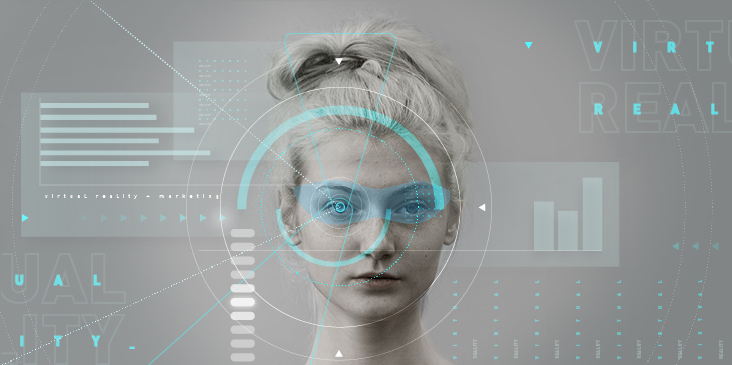
For some, it’s a dream, for others the mere idea is a real nightmare: the desire to leave reality and dive into another, more interesting world.
After several ambitious attempts during the 90s, which we tend to chuckle over nowadays, we’ve finally come to the next great revolution. The “next big thing”, Virtual Reality, has arrived!

Virtual Reality (VR) gives us access to a new dimension of experience. The introduction of a computer-generated, interactive environment lets the user immerse in an individually created world that offers a whole new perspective. Possibilities exist for marketers that were previously unimaginable. VR gives content marketing the opportunity to offer products and services in a new, experiential way.
Companies from a wide range of industries have already discovered VR and taken the first steps to use this technology for their advertising channels. VR glasses create a unique experience for the customer, one where the brand’s world can merge with the consumer’s. So often, suppliers from the tourism and automotive sectors have been pioneers in finding ways to combine technological possibilities with clever ideas to make their own brand easier to experience, and through those experiences, increase the likelihood that a consumer buys their product. For instance, automobile manufacturer Audi is expanding its customer service through a virtual testing experience. Audi’s motto “try before you buy” means the customer can configure the very newest model of his or her favorite car, sometimes even before the car is officially available for sale, and take a test ride right then and there. All of this is available at the Audi dealer, or alternatively, from home. Many travel companies are also using this new VR technology to take curious visitors on virtual tours through hotel lobbies, or on a visit through each type of hotel room. A 360-degree view ensures that what a customer wants is what they actually get, engaging customers’ emotions too.
These examples make it clear that VR is definitely not video wrapped in a new guise, but that it goes far beyond. Texts and images become more tangible through the immersive experience of a digital world, and the limits of this new communication channel are far from defined. Now, however, the question arises whether VR is already effective on a mass scale, and if it’s even a must for advertising companies. The answer? Yes, and no.
It’s an undisputed fact that technology offers unlimited possibilities for marketers. This experience-oriented, impressive VR not only attracts a new kind of attention to products, but beyond that sense of novelty it can also communicate content and brand statements in a form and intensity still unavailable to other modes. Skillful storytelling is of utmost importance in maintaining the user’s attention; it is only in this way that users retain a VR experience in their long-term memory.
However, including VR as a communication medium would require a change in the entire industry’s strategy, a call for new rules and, in addition to a high potential for results, may also present dangers that are currently difficult to assess. VR’s technological maturity is far from having reached its peak, so there is still room for improvement in terms of mass appeal. Having common standards amongst the ever-increasing number of VR providers is also necessary prior to each communicating its own VR experiences to the masses.
In spite of all the reservations people may have, VR demonstrates very clearly that modern media is constantly evolving and an immerse VR experience shows what we are capable of digitally. The earlier your company orients itself for the future, the more you will benefit from this innovation before everyone else notices what they are missing out on!